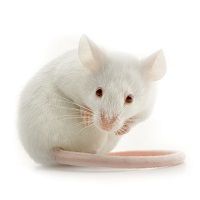Article
Peptide Viable Treatment for Spinal Cord Injury in Rats
Author(s):
Spinal cord injury animal models were able to regain muscle function after a treatment with a peptide injection, according to study results published in Nature.

Paralyzed muscles in animals activated in more than 80 percent of study subjects, and researchers believe this shows great promise for spinal cord injury patients, according to research published December 3 in Nature.
Researchers from the Case Western Reserve University School of Medicine in Ohio monitored 26 rats with spinal cord injury who received daily injections for 7 weeks. The animals were observed for their ability to walk, to balance, and to control when and how much they urinate. The researchers hypothesized the nerve tracts in the animal’s spinal cords are differentially damaged by bleeding or inflammation sustained immediately after the original injury.
The injection was a compound was known to the investigators as intracellular sigma peptide (ISP). The peptide turns off the neuron’s proteoglycan receptor activator, and the researchers included a trans-activator of transcription to send ISP throughout the nervous system and cell membranes. Then, ISP can penetrate cell membranes — even the scar tissue around the injury site – and begin its work. Using this delivery method eliminates the need for direct injection into the spinal cord, and ISP can be delivered systematically.
After the injections began, 21 of the 26 animals regained one or more of the functions, while some regained 2 out of 3 or all 3. The injection allowed the nerve fibers to overcome scarring that normally blocks their growth.
“This recovery is unprecedented,” senior author Jerry Silver, PhD said in a press release. “Each of the 21 animals got something back in terms of function. For any spinal cord-injured patient today, it would be considered extraordinary to regain even one of these functions, especially bladder function. ISP additionally has treatment potential for diseases where the body produces destructive scarring such as heart attack, peripheral nerve injury and multiple sclerosis.”
The researchers are unsure why some animals regained specific functions while others did not, but believe a clue lies in the amount of nerve tracts in tact in the animals’ spinal cords. Each spinal cord was damaged differently after the original injury, but the serotonergic fibers generally responded similarly across all animal models. The fibers release serotonin into the spinal cord which can enhance function of whatever amount of fiber tracts remain and can control behaviors — the behaviors that were then demonstrated restored function.
However, each animal had a different serotonergic sprouting pattern and variable tract sparing, which is likely the reason each animal regained different movement function.
“Sprouting is a critical phenomenon,” Silver continued. “Even if there are just a few intact fibers left after the injury, it could be one critical piece that brings back an important function.”
While there is currently no drug therapy for spinal cord injury patients, the research team believes this therapy could become a key in identifying a novel agent in aiding recovery. Silver’s team is now testing the efficacy of the compound in animal models of heart attack, peripheral nerve injury, and multiple sclerosis.
“Our goal is to progress this treatment forward for use as a therapeutic following spinal cord injury,” Silver concluded.





